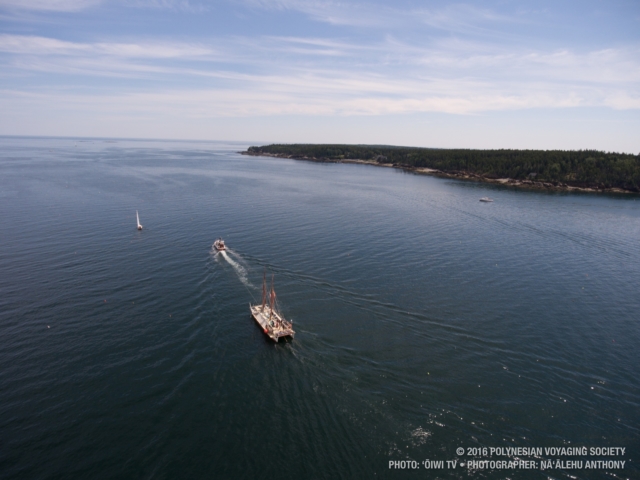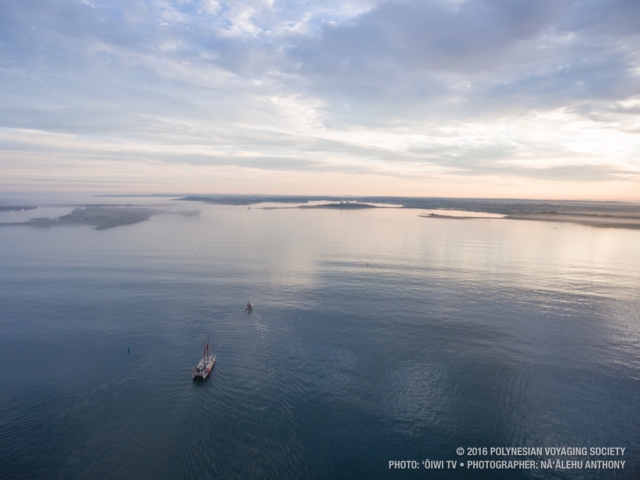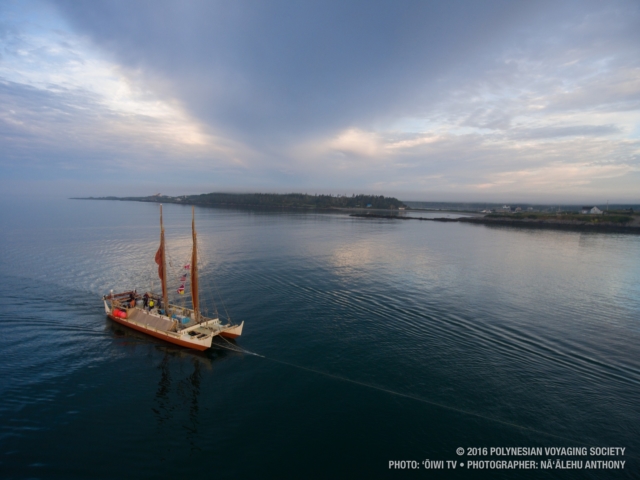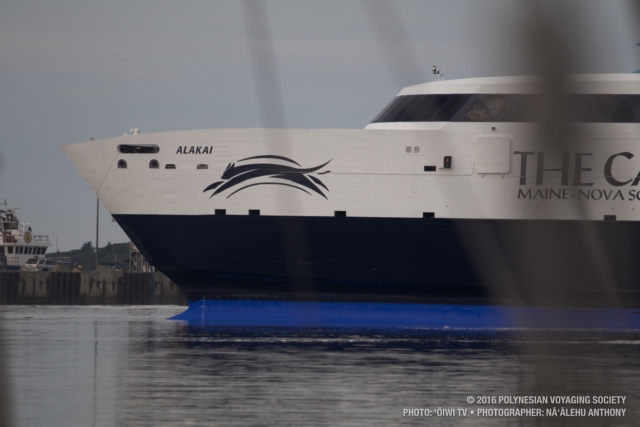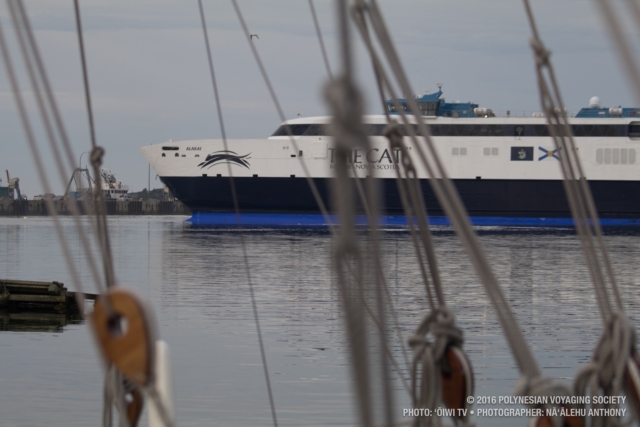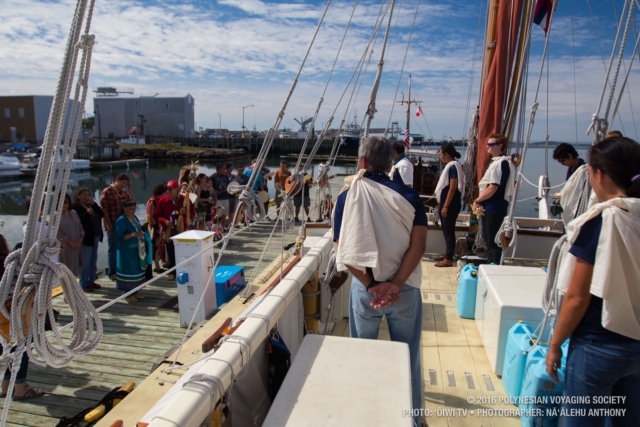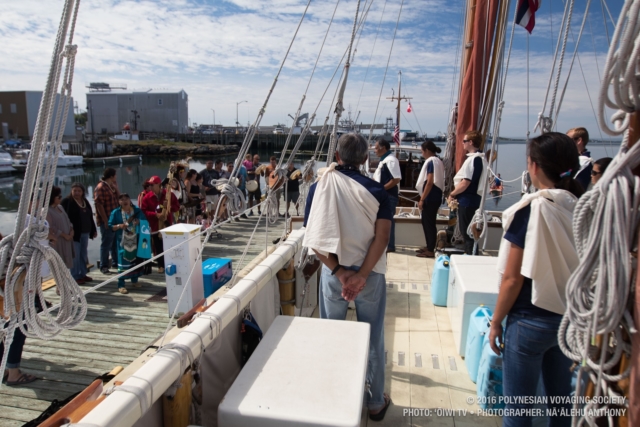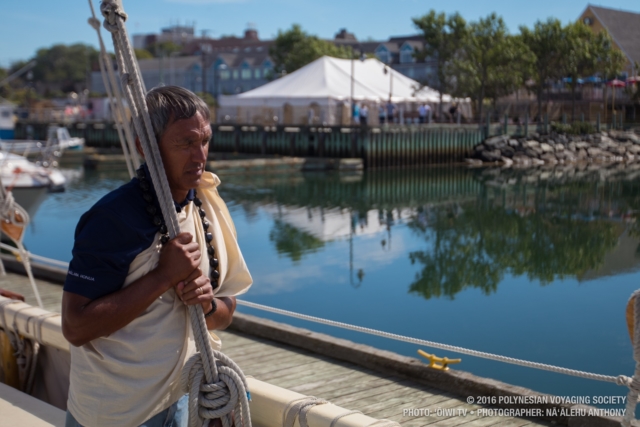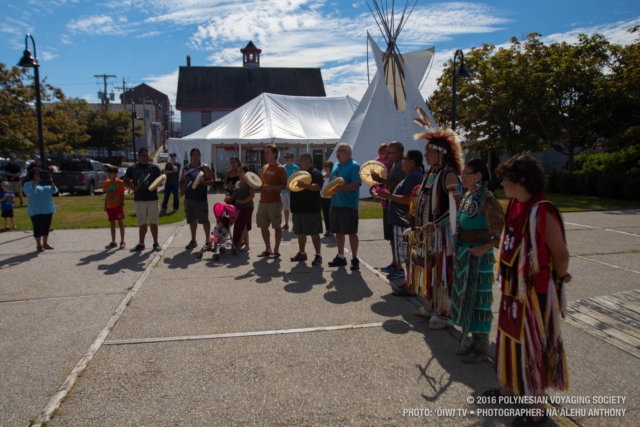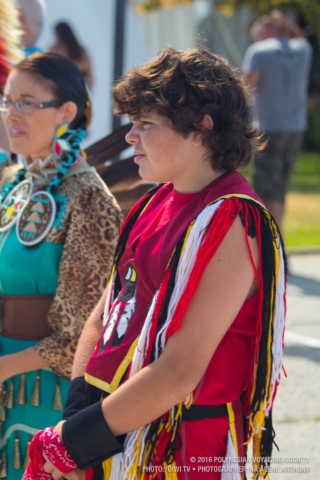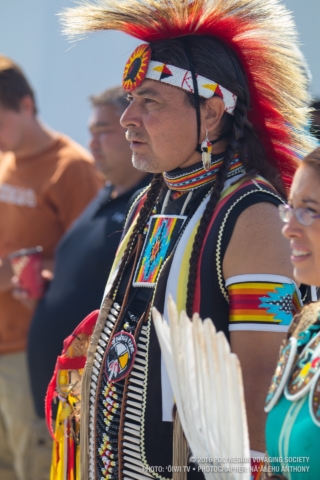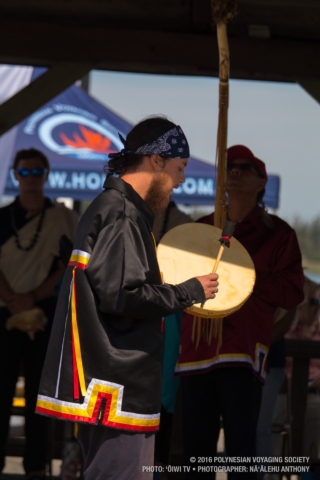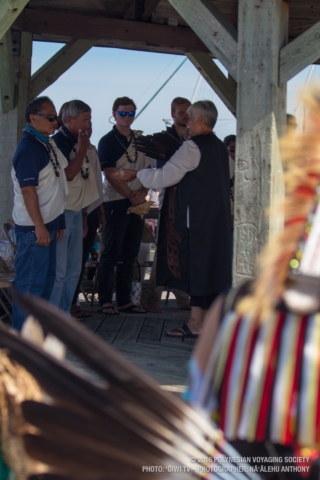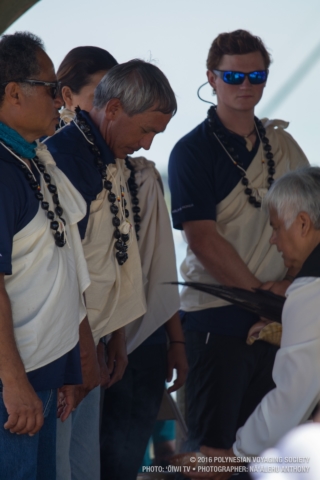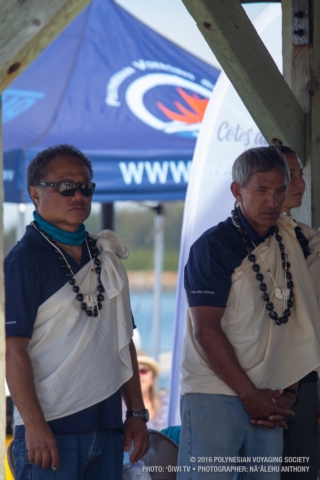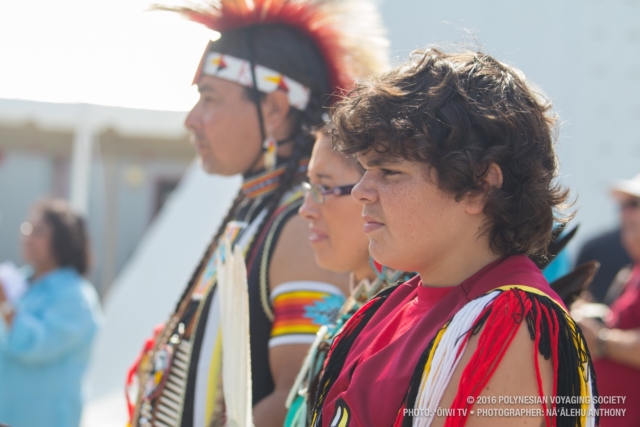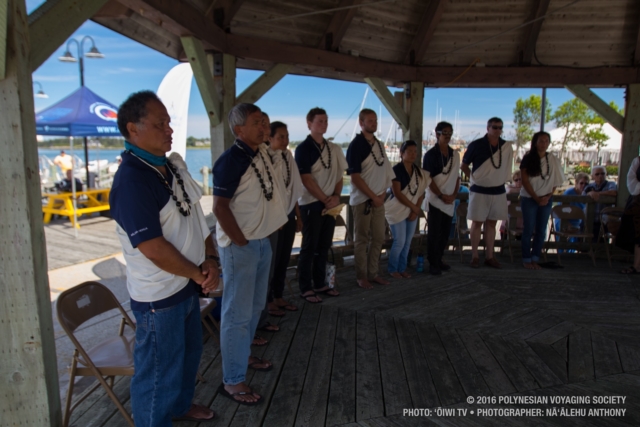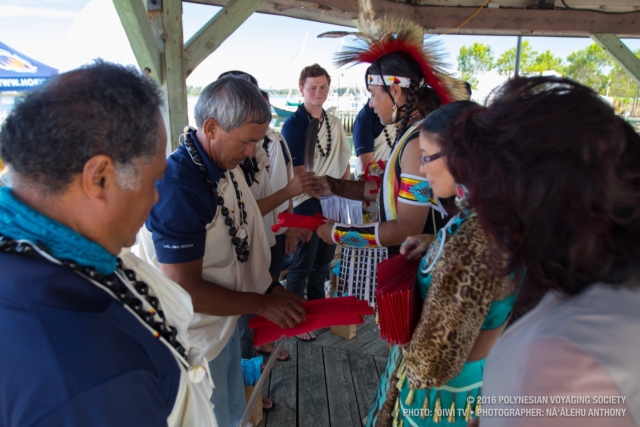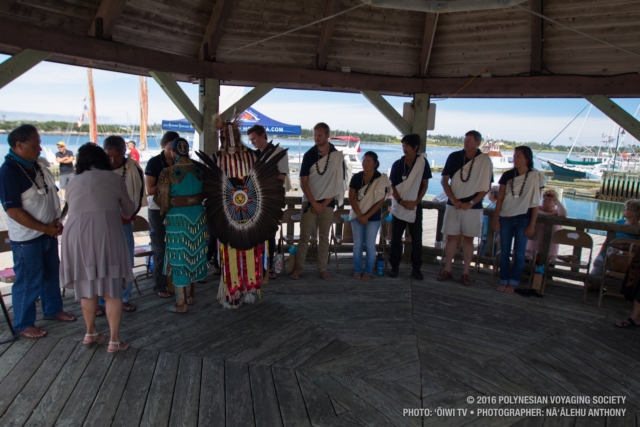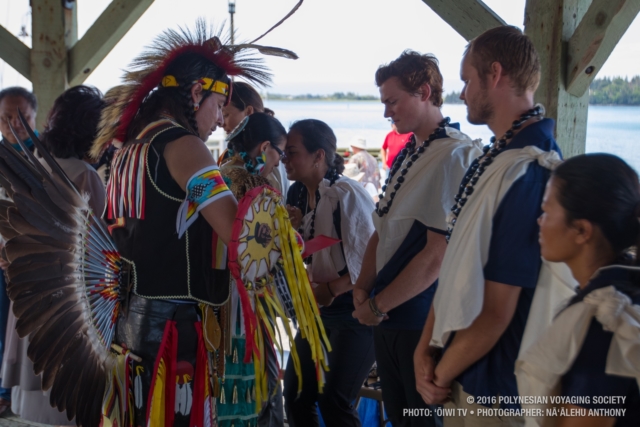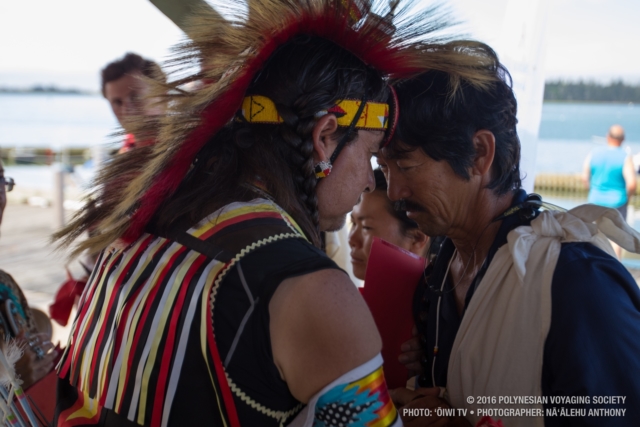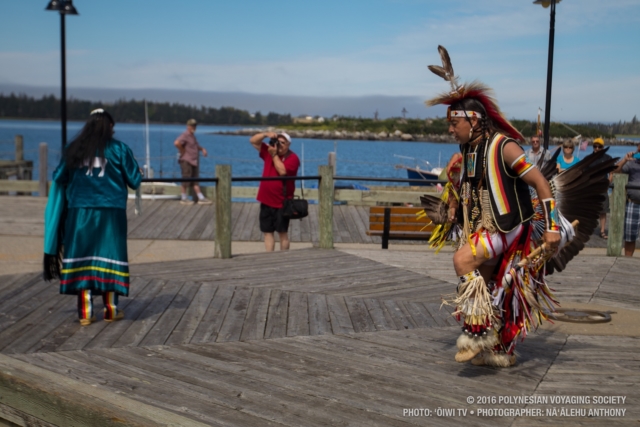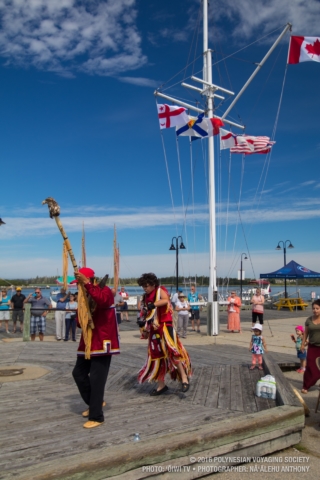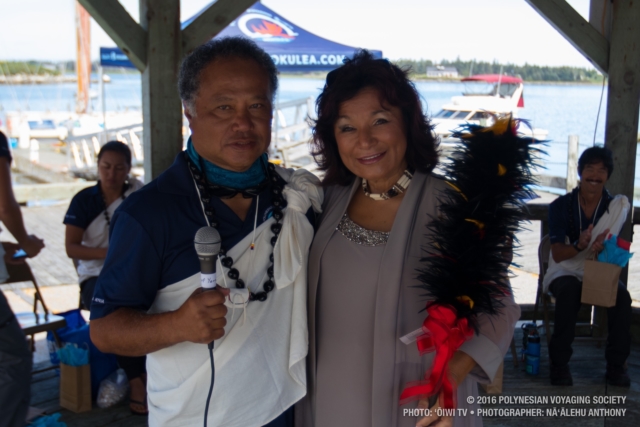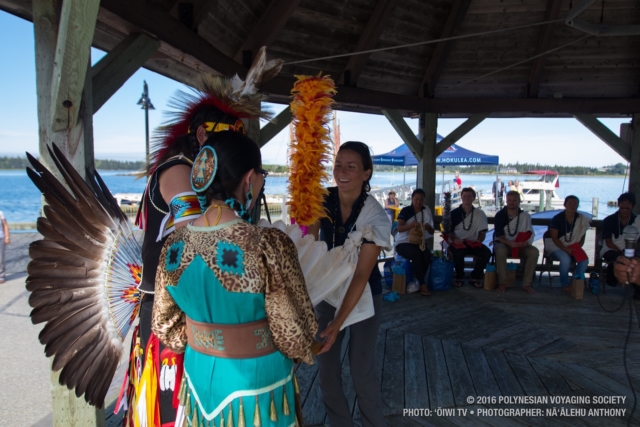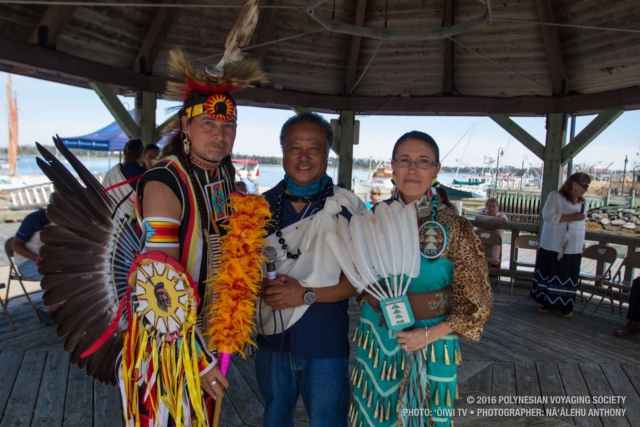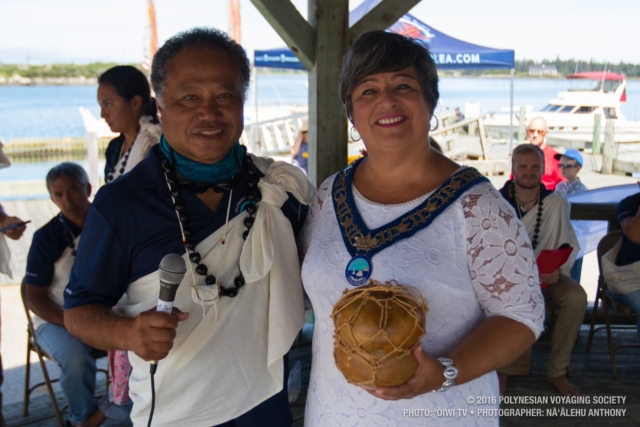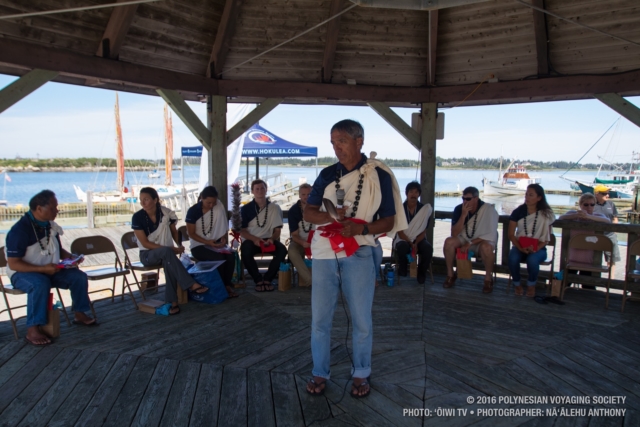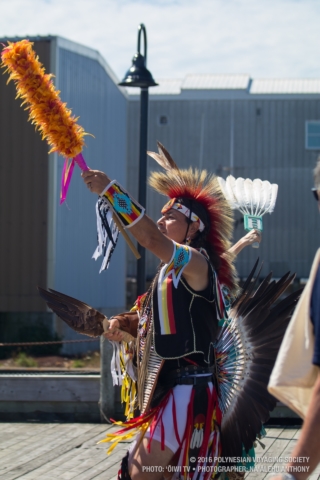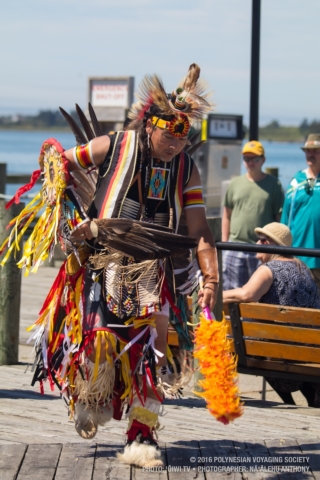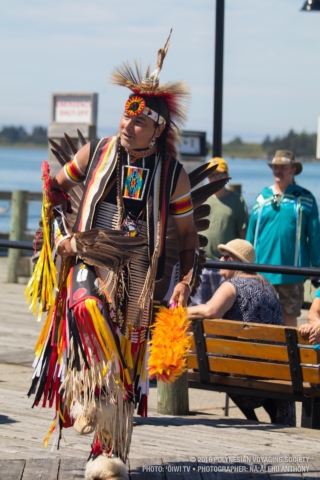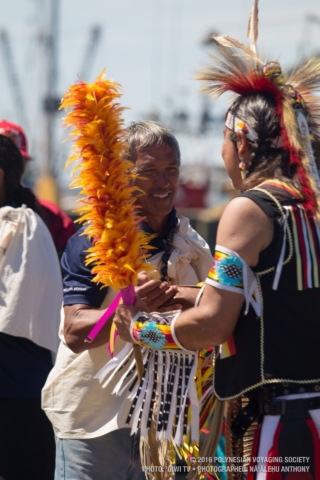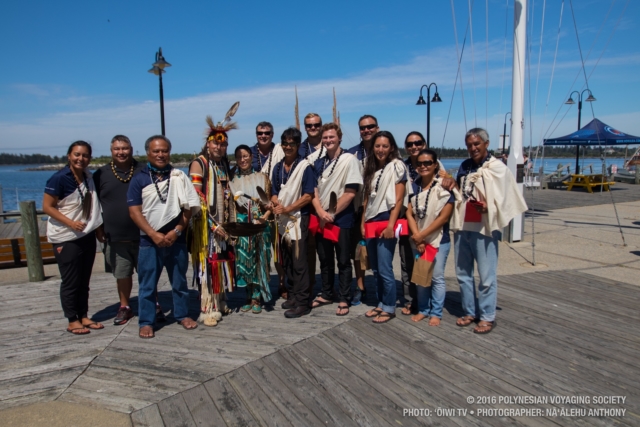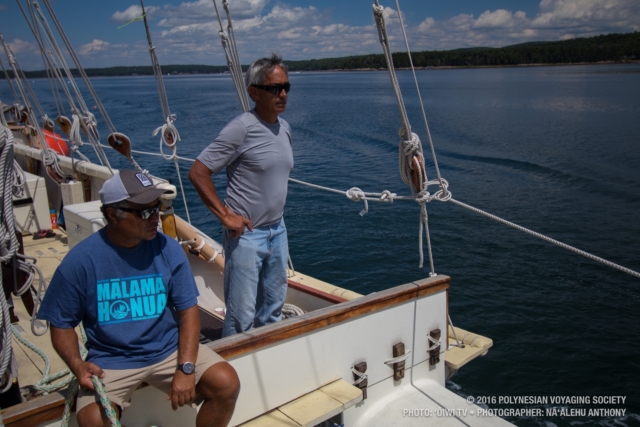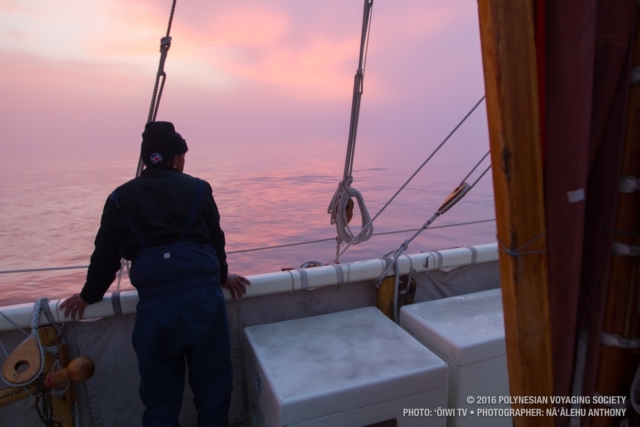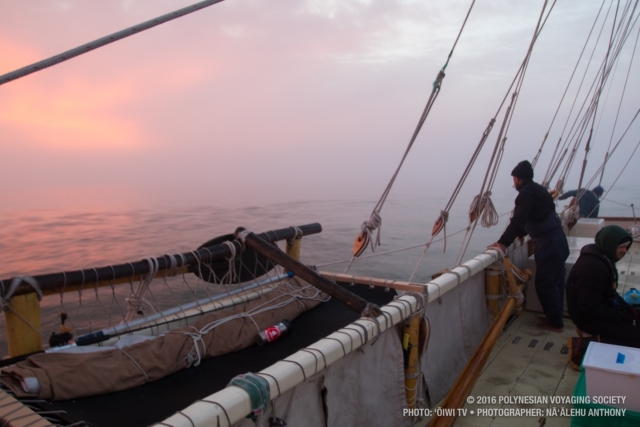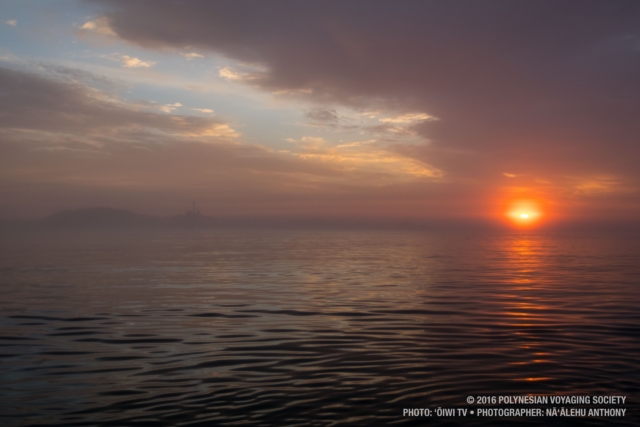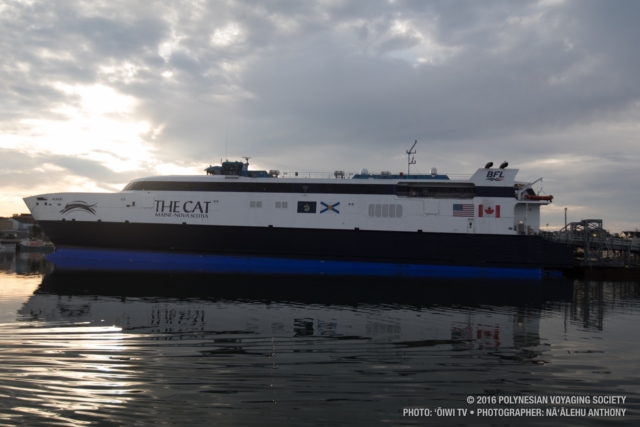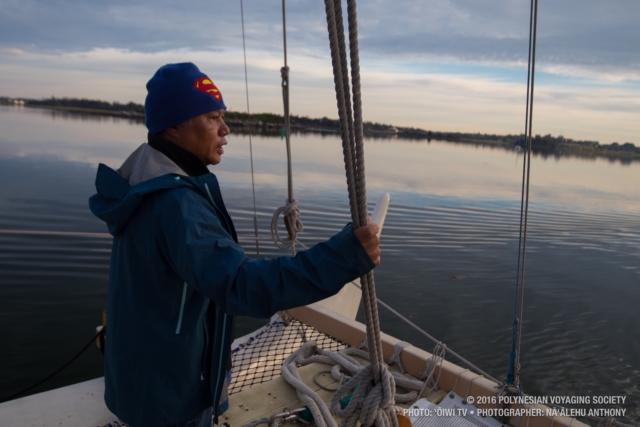
Hōkūleʻa Update | July 31, 2016
- Posted on 31 Jul 2016
- In Education, Newsletter, Photo Galleries, Teachers, Updates
Hōkūleʻa, Hawaii’s iconic traditional canoe, took the Mālama Honua Worldwide Voyage north of the United States as it arrived at Canada’s Port of Yarmouth early this morning. Crew members were welcomed by the Nova Scotia community, dignitaries and members of the Mi’kmaw (pronounced “Meeg Maw”) Nation on the Yarmouth dock, some who attended the occasion in traditional garb. The Mi’kmaw are part of the Wabanaki that Hōkūleʻa and her crew honored during the voyage’s recent Portsmouth and Mt. Desert stops.

The celebratory arrival ceremony featured cultural dances and the rhythmic beating of drums. Feathers were presented by a representative of the Mi’kmaw to each Hōkūleʻa crew member as a symbol of peace and unity. Canadian legislators were also in attendance: the Honourable Zach Churchill, Yarmouth Mayor Pam Mood, Warden Murray Goodwin from the Municipality of Yarmouth, and Warden Aldric d’Entremont from the Municipality of Argyle.

“This makes me believe that we’re more alike than we’re different. When we come here and you tell us to come to your place, and thank us for being here, and for being happy – that’s aloha,” said Nainoa Thompson, pwo (master) navigator and president of the Polynesian Voyaging Society, during the arrival ceremony. “The Worldwide Voyage is trying to take this little canoe and aloha around the world, and we came to Yarmouth for that purpose,” he added.

Chief Deborah Robinson of the Acadia First Nations (Mi’kmaw Nation) also spoke at the event. “The Mi’kmaw as part of the indigenous community of Canada, has always struggled and continue to strive to protect Mother Earth and all the natural resources for the future. The preservation of our environment and conservation of the resource is of utmost importance to us as the Mi’kmaw. We all have the same goal – in ensuring a future for our children, and for children for generations to come.”

While in Canada, Hōkūleʻa crew members hope to learn more about cultural and environmental sustainability practices from the Bay of Fundy and the Southwest Nova Biosphere Reserve-a UNESCO-designated area that serves as a model for demonstrating a balanced relationship between humans and the environment. The Hōkūleʻa crew hopes to document and share what they learn from the visit with students in classrooms throughout Hawaii. They will stay for about six days to engage with the area’s First Nations, learn about Nova Scotia’s natural resources and conservation efforts and offer canoe tours to the community.
Help fund the Voyage as we sail the East Coast
Hōkūle‘a’s visit to the eastern United States is a historic milestone in her 40 years of voyaging.
Celebrate with us by pledging your support to the Mālama Honua Worldwide Voyage.
